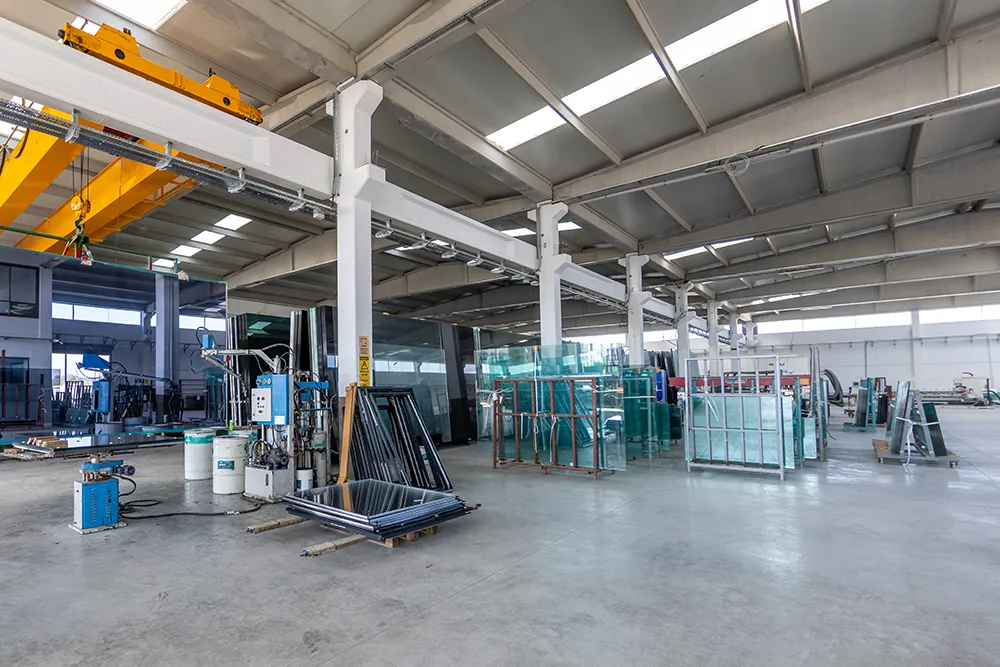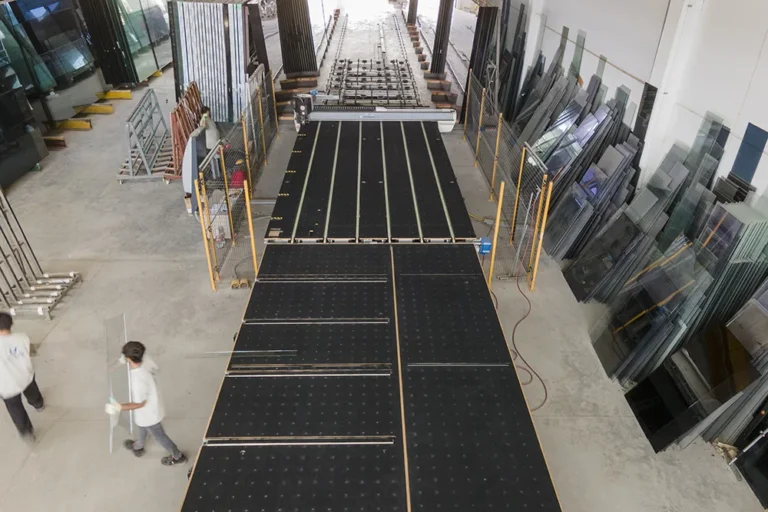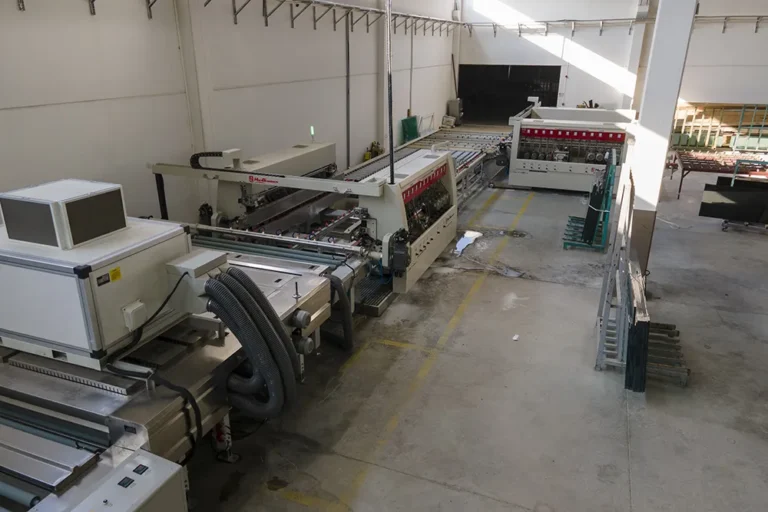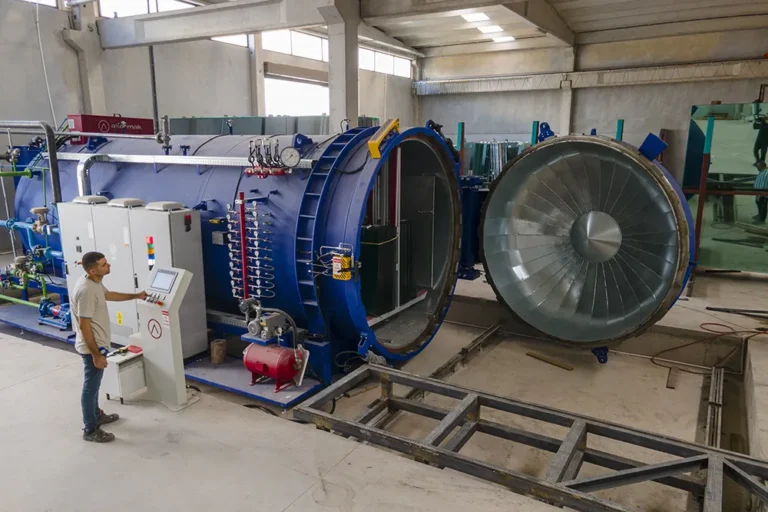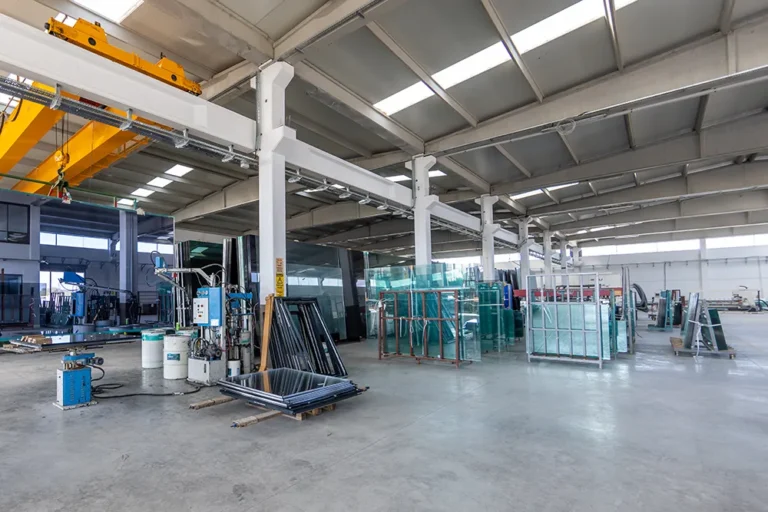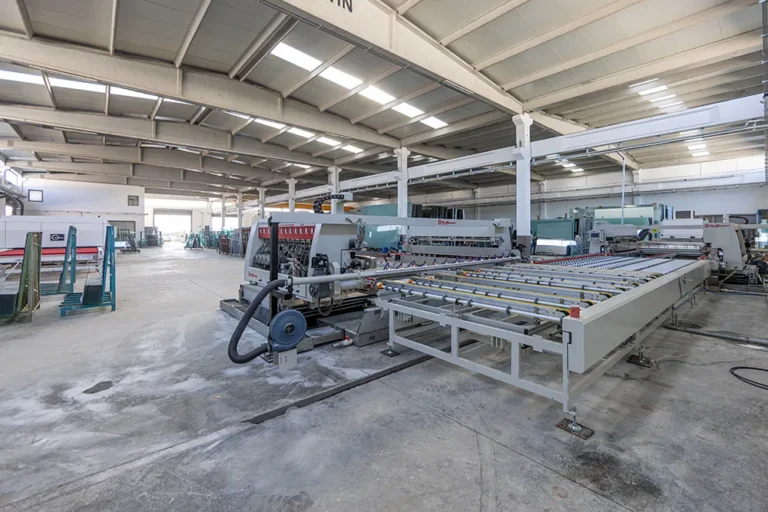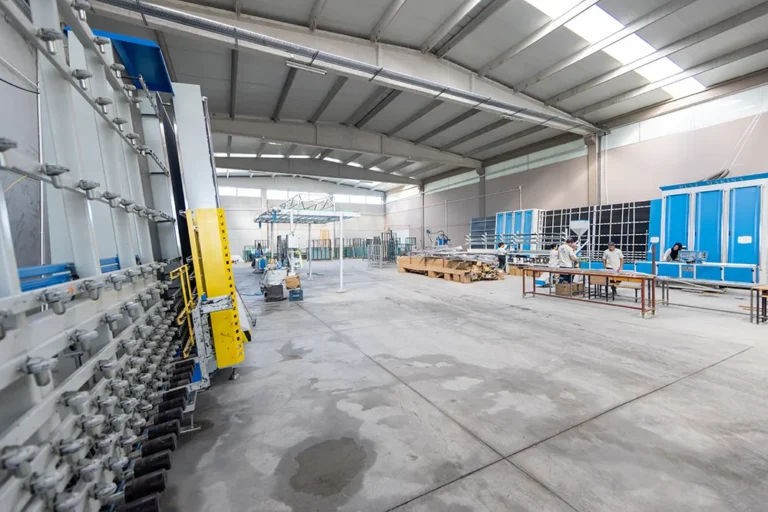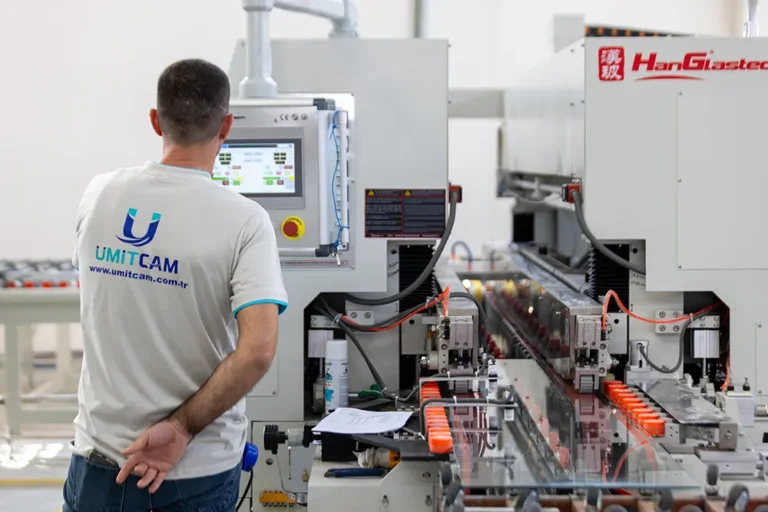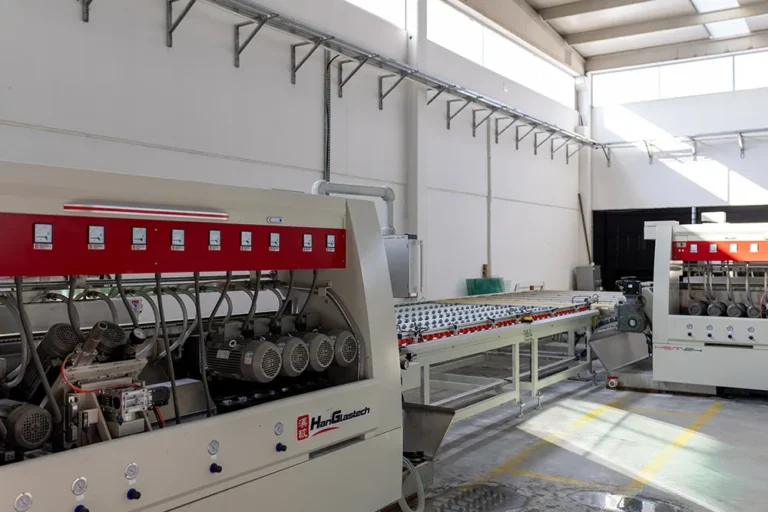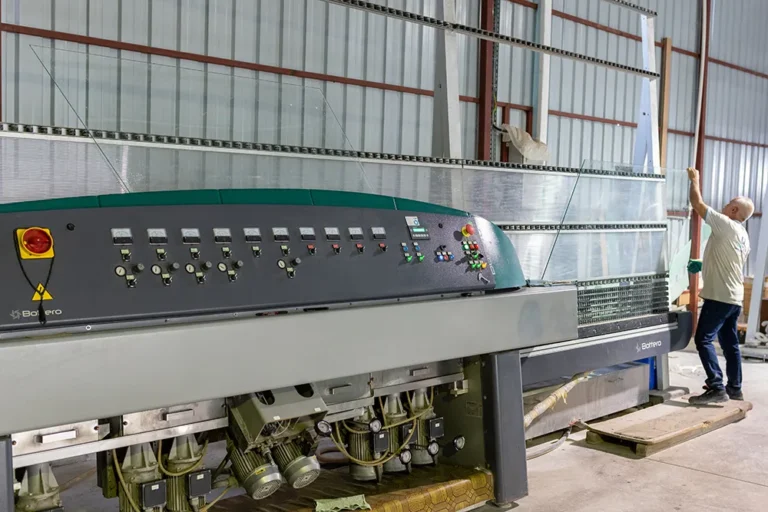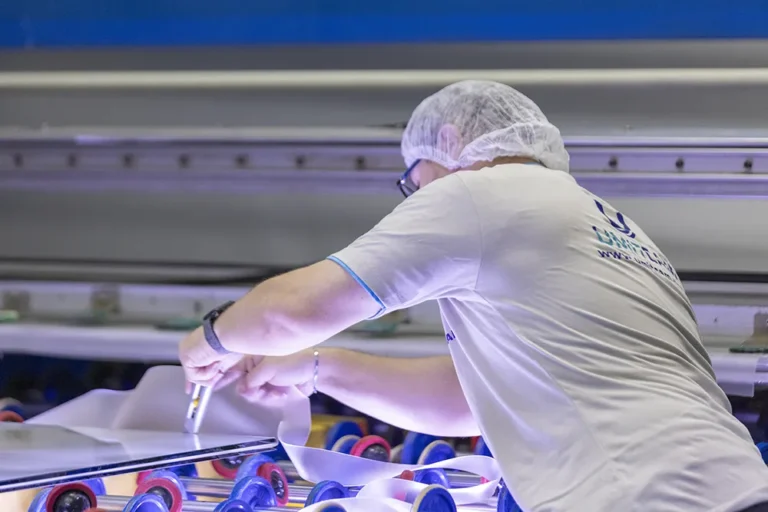24/7 Live Support
- Contact us Çıplaklı Mh. 2144 Sk. No:29 Organize Sanayi Bölgesi Döşemealtı / ANTALYA
- Call Us +90 (242) 221 21 10
- Write to Us info@umitcam.com.tr
Sisecam Tentesol

Definition
Şişecam Tentesol is the reflective solar control glass of Şişecam Flat Glass.
Şişecam Tentesol can be used as a single plate or can be included in Insulating Glass Systems. Insulating Glass Systems S Series created with Şişecam Low-E Glass, in addition to solar control feature also saves on heating costs.
Note
All solar control glass has thermal breakage risks. For this reason, it is recommended to use Şişecam Tentesol glass tempered or partially tempered. When laminated, all layers of laminated glass must be tempered or partially tempered against thermal breakage risks.
Şişecam Tentesol can be used as a single plate or it can be included in Insulating Glass Systems.
Insulating Glass Systems S Series created with Şişecam Low-E Glass, in addition to solar control feature also saves on heating costs.
Colors
Available in silver, green, smoked, bronze and blue.
Advantages
It limits solar heat penetration into the building, controls the excessive brightness of the sun, and provides a comfortable working and living environment.
It saves cooling costs by reducing cooling energy consumption in air conditioned environments.
When viewed from the direction of strong light, it creates a mirror effect. For example, during daylight hours, it provides a one-way view from the inside out, and at night, on the contrary, from the outside in.
In buildings with curtain walls, it provides visual integrity by hiding structural elements such as columns, beams, parapet walls, suspended ceilings and installation gaps with the help of its reflective feature.
When the coated surface is used inward (2nd surface), color comes to the fore, and when it is used outward (1st surface), reflection comes to the fore.
Thanks to its hard coating, it can be stored in stocks for a long time without damage.
Tempering, partial tempering, crowning, enamel printing and laminating are available.
Şişecam Tentesol offers solutions for curtain walls and/or windows of commercial buildings, balcony glazing, partition walls or decorative applications in interior architecture.
Şişecam Tentesol is obtained by applying a thin, reflective, pyrolytic hard coating with high mechanical and chemical resistance on colorless or colored glass in the flat glass line.
Performance Tables
Float Glass
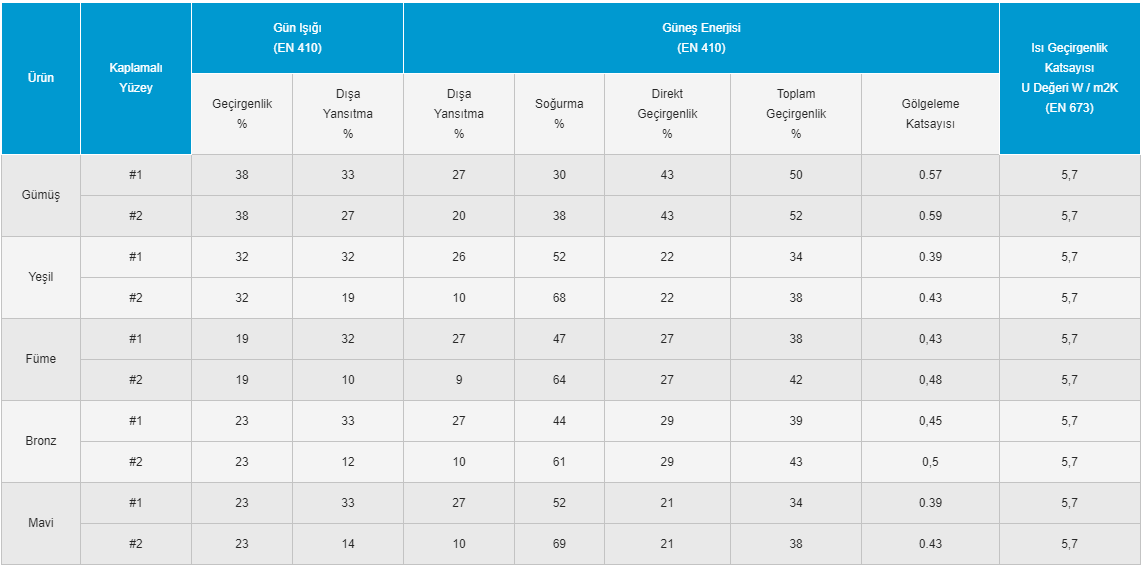
The above values are given for 6 mm thick float glass.
"Daylight" and "Solar Energy" values were calculated in the "TNO Science and Industry" - WIS 3.01 package program using spectral data measured in the laboratory in accordance with EN 410 standard.
The U value, which is the coefficient of thermal conductivity, was calculated with the WIS 3.01 program in accordance with EN 673 standard. The emissivity values used in the U value calculation were measured in the laboratory in accordance with EN 673 (Annex A) and EN 12898.
The risk of thermal breakage may arise due to factors such as exposure to partial solar radiation along the surfaces of the glass, temperature differences between day and night, heat absorption coefficients of the glass or joinery types. Depending on these factors, it may be necessary to use tempered or partially tempered glass. This document does not contain any calculations for thermal breakage risks. Please contact Şişecam Flat Glass for your questions on this subject.
In units built with reflective solar control glass, it is recommended to use reflective glass as exterior glass.
This document is for informational purposes only and the information contained in it may be changed by Trakya Cam Sanayii A.Ş. without any warning.
There may be differences between the values given in this document and the actual values depending on the conditions at the place of use. Trakya Cam Sanayii A.Ş. cannot be held responsible for these differences in any way.
Daylight Transmittance: It is the percentage of light incident on the glass that passes through the glass.
Daylight Reflectance (exterior): The percentage of light incident on the glass that is reflected back by the glass.
Solar Total Transmittance: It is the percentage of the total solar energy incident on the glass that penetrates. A lower solar total transmittance value means better solar control.
Shading Coefficient: Total transmittance of solar energy compared to 3 mm colorless glass. Lower shading coefficient means better solar control.
Heat Transmission Coefficient: It is a measure of thermal insulation in glass. A lower U-value means better thermal insulation, less heating costs and more winter comfort.<
Insulating Glass Insulating Glass
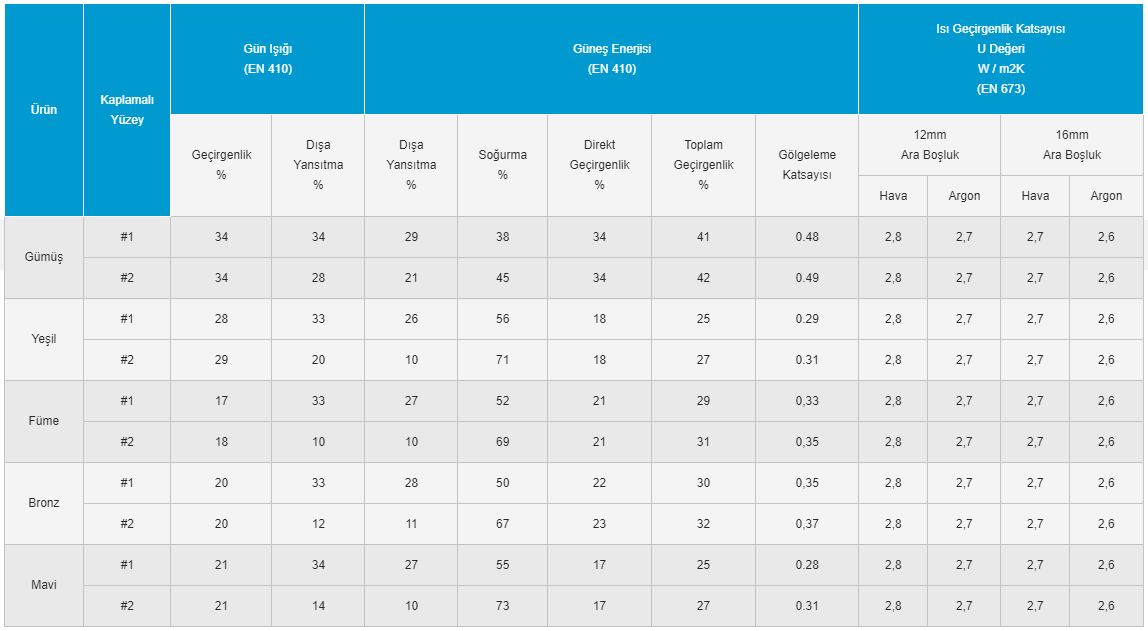
The above values are given for insulating glass formed in the order of 6 mm thick Şişecam Tentesol outer glass + 12/16 mm spacer + 6 mm thick inner glass.
"Daylight" and "Solar Energy" values were calculated in the "TNO Science and Industry" - WIS 3.01 package program using spectral data measured in the laboratory in accordance with EN 410 standard.
The U value, which is the coefficient of thermal conductivity, was calculated with the WIS 3.01 program in accordance with EN 673 standard. The emissivity values used in the U value calculation were measured in the laboratory in accordance with EN 673 (Annex A) and EN 12898.
The risk of thermal breakage may arise due to factors such as exposure to partial solar radiation along the surfaces of the glass, temperature differences between day and night, heat absorption coefficients of the glass or joinery types. Depending on these factors, it may be necessary to use tempered or partially tempered glass. This document does not contain any calculations for thermal breakage risks. Please contact Şişecam Flat Glass for your questions on this subject.
This document is for informational purposes only and the information contained in it may be changed by Trakya Cam Sanayii A.Ş. without any warning.
The U value, which is the coefficient of thermal conductivity, was calculated with the WIS 3.01 program in accordance with EN 673 standard. The emissivity values used in the U value calculation were measured in the laboratory in accordance with EN 673 (Annex A) and EN 12898.
Daylight Transmittance: It is the percentage of light incident on the glass that passes through the glass.
Daylight Reflectance (exterior): The percentage of light incident on the glass that is reflected back by the glass.
Solar Total Transmittance: It is the percentage of the total solar energy incident on the glass that penetrates. A lower solar total transmittance value means better solar control.
Shading Coefficient: Total transmittance of solar energy compared to 3 mm colorless glass. Lower shading coefficient means better solar control.
Heat Transmission Coefficient: It is a measure of thermal insulation in glass. A lower U-value means better thermal insulation, less heating costs and more winter comfort.
Low-E Combination Insulating Glass Insulating Glass (Coating on the 3rd surface)
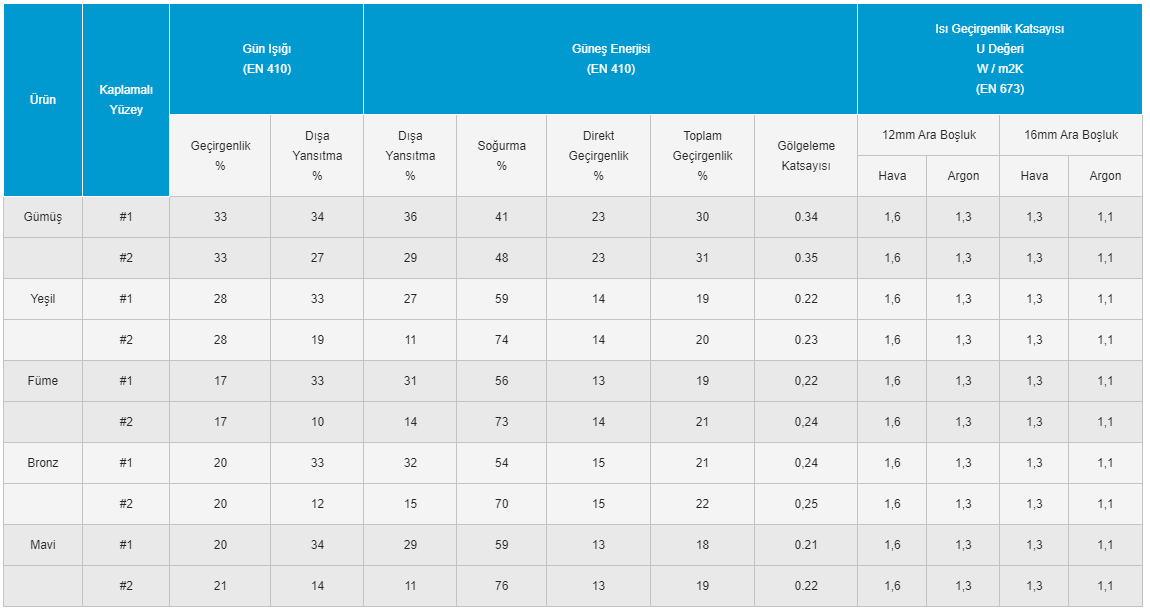
The above values are given for insulating glass formed in the order of 6 mm thick Şişecam Tentesol outer glass + 12/16 mm spacer + 6 mm thick inner glass.
"Daylight" and "Solar Energy" values were calculated in the "TNO Science and Industry" - WIS 3.01 package program using spectral data measured in the laboratory in accordance with EN 410 standard.
The U value, which is the coefficient of thermal conductivity, was calculated with the WIS 3.01 program in accordance with EN 673 standard. The emissivity values used in the U value calculation were measured in the laboratory in accordance with EN 673 (Annex A) and EN 12898.
The risk of thermal breakage may arise due to factors such as exposure to partial solar radiation along the surfaces of the glass, temperature differences between day and night, heat absorption coefficients of the glass or joinery types. Depending on these factors, it may be necessary to use tempered or partially tempered glass. This document does not contain any calculations for thermal breakage risks. Please contact Şişecam Flat Glass for your questions on this subject.
This document is for informational purposes only and the information contained in it may be changed by Trakya Cam Sanayii A.Ş. without any warning.
The U value, which is the coefficient of thermal conductivity, was calculated with the WIS 3.01 program in accordance with EN 673 standard. The emissivity values used in the U value calculation were measured in the laboratory in accordance with EN 673 (Annex A) and EN 12898.
Daylight Transmittance: The percentage of incoming light that passes through the glass.
Daylight Reflectance (exterior): The percentage of light incident on the glass that is reflected back by the glass.
Total Solar Energy Transmittance: The percentage of the total solar energy incident on the glass that enters the interior. A lower solar total transmittance value means better solar control.
Shading Coefficient: The total transmittance of solar energy compared to 3 mm colorless glass. Lower shading coefficient means better solar control.
Heat Transmittance Coefficient: A measure of thermal insulation in glass. A lower U-value means better thermal insulation, less heating costs and more winter comfort.
Quality
Şişecam Tentesol, "TS EN 1096 Glass - Used in Buildings - Coated Glass" is produced in accordance with the standard.
Our Production Capacity and Facility
We operate in our 10,500 square meter factory located in Antalya Organized Industrial Zone.
Our production includes insulating glass production, tempered glass production, laminated glass production, painted glass production and mirror types.
With 2 insulating glass production lines, we have an average daily production capacity of 1200 square meters of glass.

CONSULT OUR EXPERT
We are here for you
Don't make a decision without consulting us
Customer Feedback








